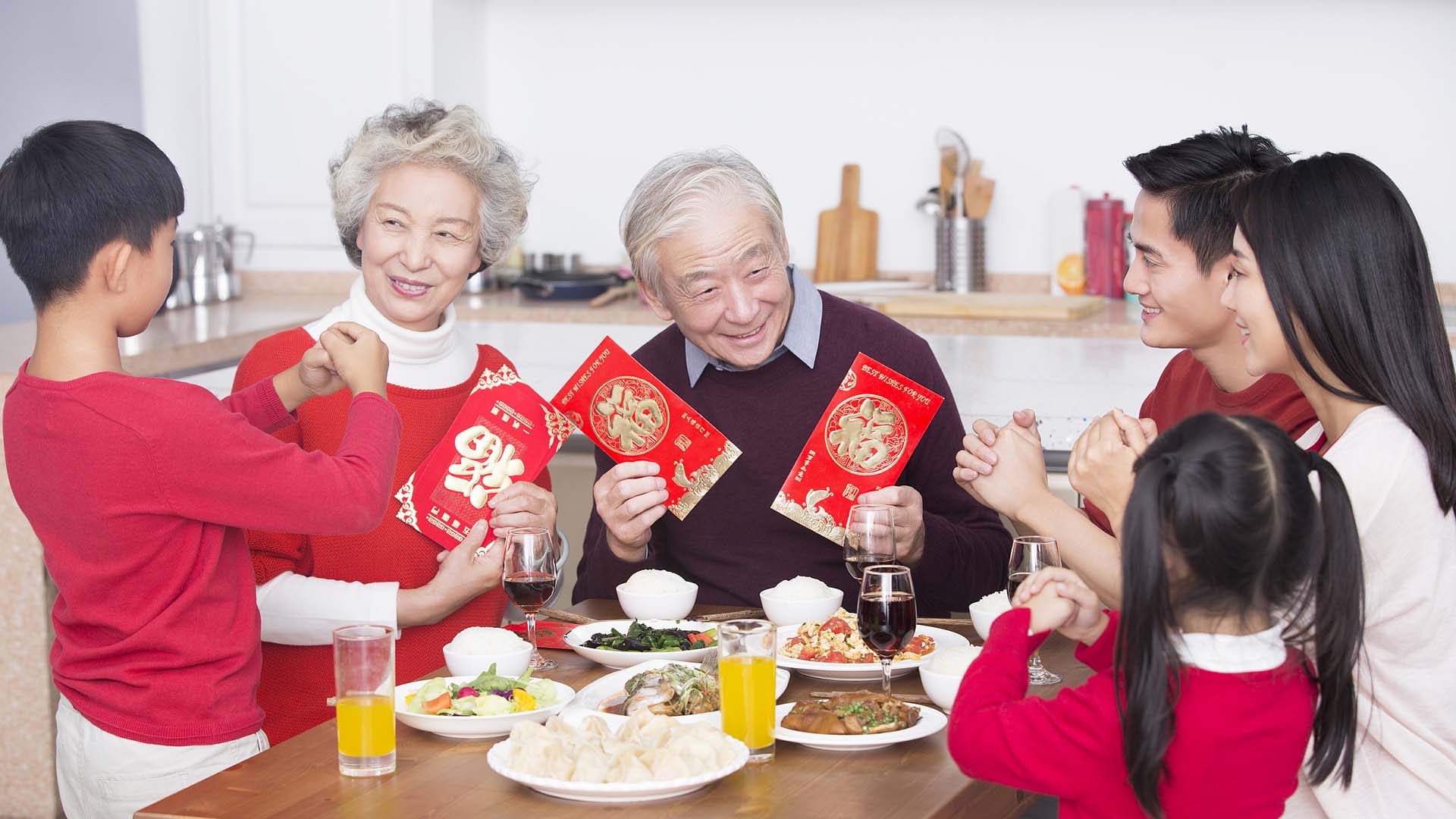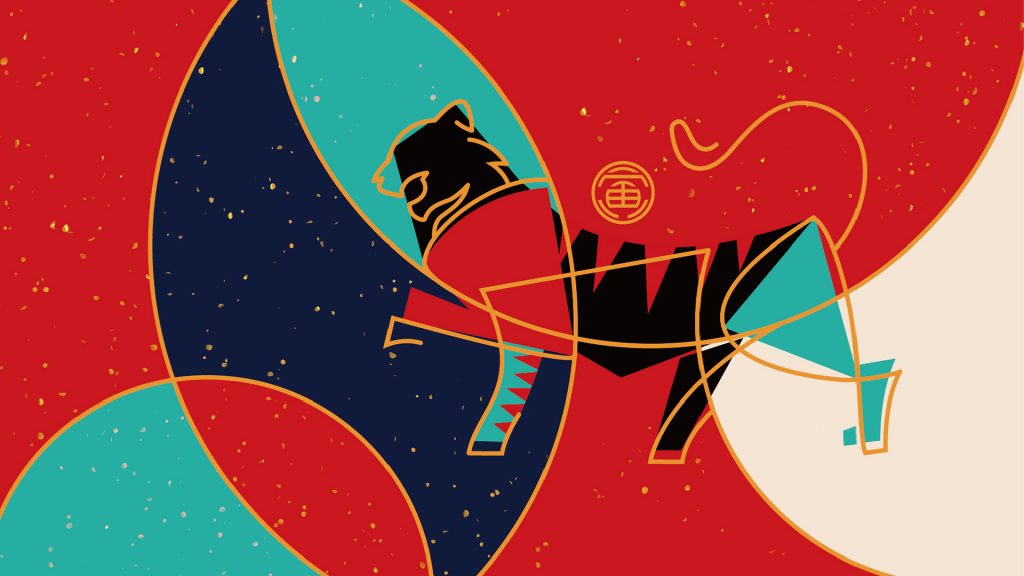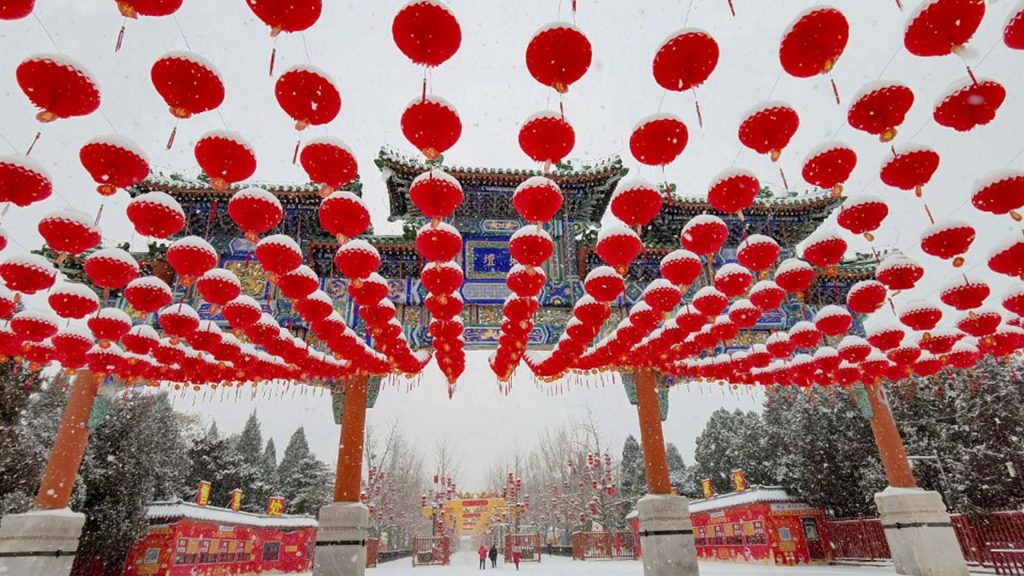
Eight Copper Coins
Everything you need to know about lucky red envelopes
The Lunar New Year is a time of well wishes and good fortune, and there’s no better way to showcase this than with lucky red envelopes. Known as “hongbao” in Chinese, the custom involves gifting money in ornate red packets as blessings to loved ones. Here are five things you need to know about this auspicious tradition.
Thousands-year-old Tradition
While it remains a challenge to trace the exact origin of hongbao, the earliest written record is from the Han dynasty. One popular legend has it that the tradition came about as a way to ward off Sui, a demon known to terrorize sleeping children on Lunar New Year’s Eve. According to the folk tale, a couple gave their young son eight copper coins to play with in the hopes of keeping him awake and safe from Sui. When the child eventually fell asleep, his parents wrapped the coins in red paper and placed the package under his pillow. The envelope, and the coins within, became an amulet for the sleeping child, scaring off the demon as it attempted to approach. Modern hongbao contain paper bills instead of copper coins, but the combination of money and red paper is still believed to bring safety and good luck.

Blessings for Everyone
Traditionally, the elder generation gives out hongbao to the younger generation during Lunar New Year. It’s a tradition that children especially look forward to. Beyond Lunar New Year, hongbao can also be gifted during other celebratory occasions as blessings. For example, some gift lucky red envelopes to their parents on their birthdays to wish them good health and longevity. Newlyweds and new parents may also receive hongbao from their friends and families as symbols of their well wishes. In some Chinese companies, it’s also common for employees to receive red envelopes as recognition of their outstanding performance.

Hongbao Etiquette
When it comes to giving and receiving lucky red envelopes, there are some protocols. Ahead of the Lunar New Year (or any other festive occasion), many will prepare their hongbao by getting clean, crisp banknotes as well as new red packets with auspicious designs or inscriptions. Meanwhile, as a sign of respect and gratitude, recipients should exchange festive greetings and use both hands when accepting the envelopes. And, no matter how eager you are to take a peek at the bounty inside, never open the envelope in front of others – especially the giver!

All in the Numbers
Everything needs to add up when preparing lucky red envelopes. Numerology is particularly important in Chinese culture. For example, eight sounds like “prosperity” in Mandarin, and six sounds like “untroubled”, which is why they’re both good figures to include. Just as there are auspicious numbers, there are taboo ones, too. In particular, the number four should be avoided at all costs as it sounds like “death” in Mandarin.
Digital Hongbao
Lucky red envelopes may have a long history, but they are also evolving for the digital era. The custom of giving lucky money has gone digital. Virtual hongbao are increasing in popularity. Social media platforms and messaging apps allow users to send digital hongbao to one another and even include gamified experiences. Brands and businesses also give out digital hongbao as rewards to engage with customers, bringing an innovative spin to an age-old tradition.

Read More




